Are you trying to keep up with the latest on energy policy at the federal level? Thinking through the implications these policies will have for Virginia, your company or organization? So are we.
Here are a couple of updates and ways to stay engaged.
- Join us May 19 at our Spring Meeting. The theme is “Opportunities in the Midst of Change” with a panel on the implications of federal policy here in the Commonwealth.
- There is still time to sign on to a letter led by VAEEC member E4TheFuture urging Congress to continue support for residential energy efficiency. The deadline to sign was extended to April 21.
- The Alliance to Save Energy has an active online petition where you (and your members/customers) can voice support for the ENERGY STAR program.
- Get an update on energy efficiency legislation winding its way through the House and Senate.
- Keep sharing the good news. Preliminary results from the 2016 Virginia Clean Energy Census indicate that building energy efficiency alone accounts for $1.1B in annual revenue. We recently found this great infographic from the International Energy Agency showing the multiple benefits of energy efficiency improvements.
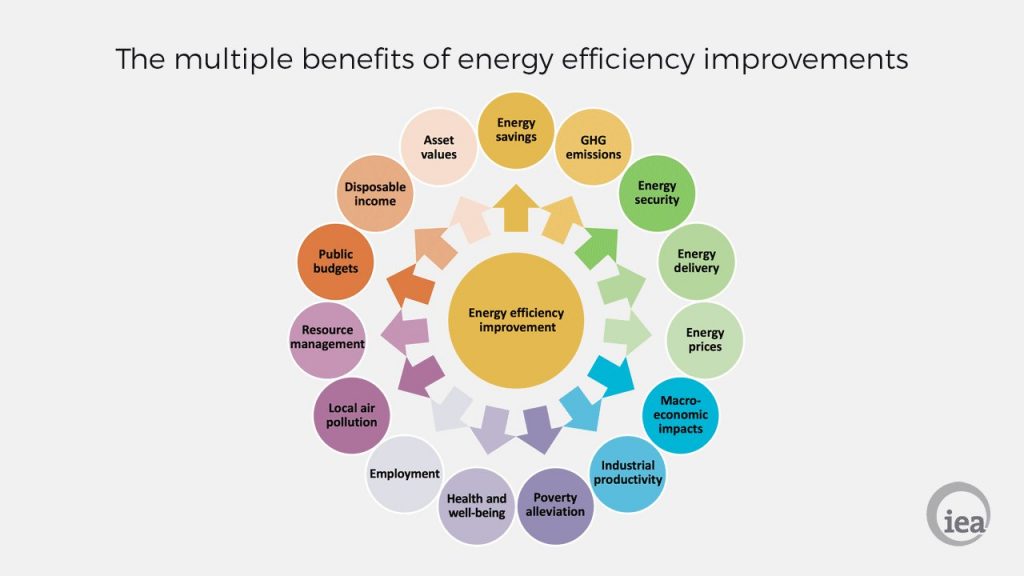
If your company or organization has a story to tell that — anecdotally or via data and research — underscores the importance and effectiveness of energy efficiency, please share it with us!
- Grab your coffee and skim through the recent news coverage and analysis. We’ve pulled some of the highlights here:
“In Virginia, the Trump effect on environment is beginning to come into focus.” (Virginian-Pilot, April 3): “The new president already had signaled in his budget blueprint delivered to Congress two weeks before that he will try to back up his campaign promises to roll back environmental regulations, which he has described as job-killing and onerous. The Environmental Protection Agency’s budget would be slashed by 31 percent next fiscal year. Environmental programs in numerous other agencies – from the Agriculture Department to NASA – would be chopped as well.”
“ENERGY STAR labels are seen as a cheap way to improve efficiency. Why does Trump want to kill them?” (Los Angeles Times, April 12) “Commercial real estate giant CBRE is always on alert for shifts in federal government policy that might impact its vast property management and investment business. But the Los Angeles-based Fortune 500 company never anticipated an effort to eliminate a voluntary, cost-effective initiative that has saved its customers millions of dollars and had almost no critics…’Never in my wildest thoughts have I considered something like this,’ said Dave Pogue, who leads the sustainability efforts at CBRE. He said the program helped the firm cut energy use at its properties by 16% over the last decade.
“Your fridge may be Washington’s next regulatory-rollback target” (Bloomberg News, April 12): “Appliance makers want Congress to ease energy efficiency standards that they say are unrealistic and costly for air conditioners, refrigerators and other equipment — even allowing for future rollbacks. The industry is lobbying to amend a decades old conservation law that sets minimum efficiency standards for many household and commercial appliances and bars them from being weakened. Manufacturers say regulators should be required to negotiate requirements with them and that some set by the Obama administration are too costly and will drive up prices.”
“States take on Trump over energy efficiency.” (Reuters, April 3): “A coalition of U.S. states has mounted a broad legal challenge against what it called the Trump administration’s illegal suspension of rules to improve the energy efficiency of ceiling fans, portable air conditioners and other products.”
“As Trump bows out, states seek to fill void on climate change” (Bloomberg News, March 28): “In statehouses across the country, both Republican and Democratic leaders are using their own regulatory powers and budgets to fill a void being left by Trump, whose order Tuesday rolled back many of President Barack Obama’s expansive initiatives to combat global warming.”
“Trump wants to cut programs that help buildings save energy. This new study says they work.” (Washington Post, March 27): “A new study, out Monday in the journal Nature Energy, finds that “green” buildings in Los Angeles alone are avoiding about 145,000 metric tons in carbon dioxide equivalents each year. And there’s hope that efficiency programs in other cities may performing similarly well.”
“Trump aims deep cuts at energy agency that helped make solar power affordable” (Washington Post, March 31): “The Trump administration is aiming a half-billion-dollar cut at the main U.S. hub for renewable energy research — 25 percent of the agency’s budget, and that’s just for the final five months of this federal fiscal year. Even deeper cuts are expected to be sought for 2018 — a possibility that has alarmed researchers in clean energy and even some Republicans in Congress. The Office of Energy Efficiency and Renewable Energy, or EERE, is a $2 billion branch of the Department of Energy. It is credited with helping to drive the rapid expansion of rooftop solar panels, electric vehicle batteries, LED lighting and more…His proposed budget would cut previously uncontroversial energy efficiency programs, like the EPA’s Energy Star and the Weatherization Assistance Program (which EERE operates), and discard entirely innovative clean energy research programs like the Advanced Research Projects Agency-Energy, or ARPA-E, also part of the Energy Department.”
“New EPA documents reveal even deeper proposed cuts to staff and programs” (Washington Post, March 31): “The Environmental Protection Agency has issued a new, more detailed plan for laying off 25 percent of its employees and scrapping 56 programs ”
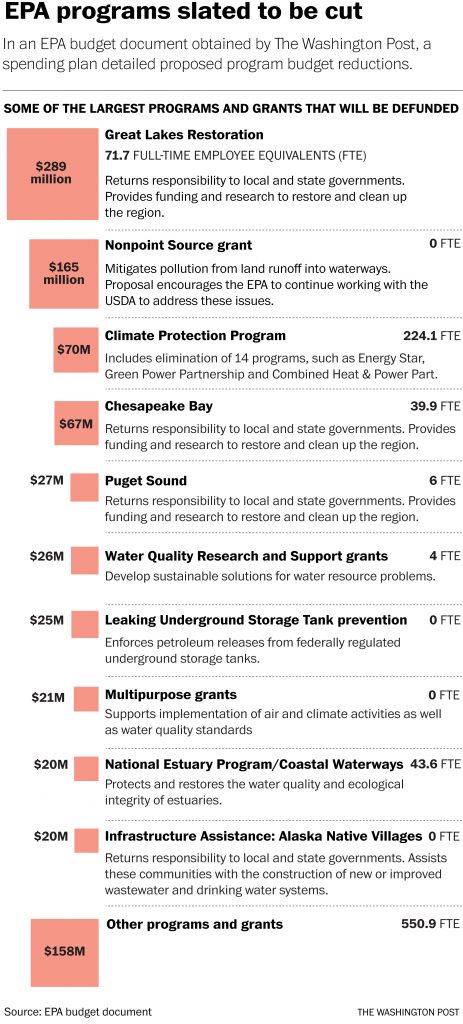
The roots of Rappahannock Electric Cooperative (REC) — VAEEC Business Gold member and April Featured Member of the Month — extend over almost 80 years, but there is nothing old fashioned about the way this electric utility serves its 161,000-plus connections in parts of 22 counties in Virginia. Unlike its members in the early days when electricity was new and exciting, today REC members expect electricity to be there when they need and want it. It powers their lives, the latest and greatest appliances and electronics and keeps life going almost effortlessly.
The 400 REC employees who work to deliver safe, affordable and reliable electricity to its members know that a lot of knowledge, time and work goes into exceeding their members’ expectations.
“Our employees ensure REC’s members are served using advanced technology and have access to a wealth of information to help them make the best decisions about how much electricity they use on a monthly basis,” explained David Koogler, vice president of member and external relations (and VAEEC Board member). “We do more than sell electricity. We provide value to our members.”
REC’s members request the ability to utilize environmentally friendly alternatives and access to tools that will help them reduce their energy consumption. The employees at REC make sure these systems are in place.
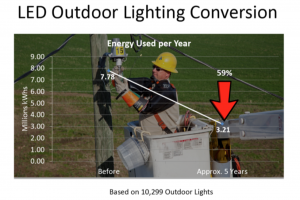 More than 10,000 REC members have either 175-watt mercury vapor lights or 100-watt high-pressure sodium lights at their residence or business. To help conserve energy and improve operational efficiency, when those lights need repairs REC is replacing them with energy-efficient 40-watt LED fixtures. Not only will these lights consume less energy, they require less maintenance and are dark sky friendly, allowing an unobscured view of the night sky while still providing a sense of security.
More than 10,000 REC members have either 175-watt mercury vapor lights or 100-watt high-pressure sodium lights at their residence or business. To help conserve energy and improve operational efficiency, when those lights need repairs REC is replacing them with energy-efficient 40-watt LED fixtures. Not only will these lights consume less energy, they require less maintenance and are dark sky friendly, allowing an unobscured view of the night sky while still providing a sense of security.
REC estimates all 10,000 residential-sized outdoor lights will be replaced over the next five years. This will help reduce energy use by 59 percent from 7.8 million kilowatt hours per year to 3.2 million kilowatt hours per year. The 4.6 million kWh saved is enough to supply 381 typical 1000 kWh per month homes for one year.
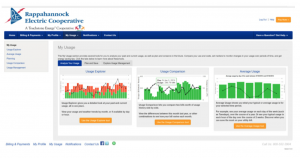 “Consideration of the environmental impact our industry has rounds out REC’s value equation,” added Koogler. “By offering energy efficient resources to members we are helping them take part in protecting our environment. We’re in the electricity business and today that means constantly promoting energy efficiency to our members.”
“Consideration of the environmental impact our industry has rounds out REC’s value equation,” added Koogler. “By offering energy efficient resources to members we are helping them take part in protecting our environment. We’re in the electricity business and today that means constantly promoting energy efficiency to our members.”
REC accomplishes this through community events, energy consultations, and short energy-tip videos shared online through their website and social media. Members also have access to tools to help them better manage their electric account. Because of the advanced metering infrastructure in place throughout REC’s service territory, all REC members have access to their hourly, daily, monthly and annual energy use data.
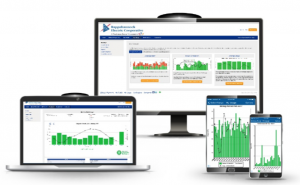 Koogler said, “Using the My Usage tool offered through REC’s MyREC SmartHub online account portal, members can log in to view this energy use data so they can identify the potential cause of spikes in energy use before they receive an unexpected high bill. They can also sign up to receive hourly or daily energy use notifications delivered by text and email.”
Koogler said, “Using the My Usage tool offered through REC’s MyREC SmartHub online account portal, members can log in to view this energy use data so they can identify the potential cause of spikes in energy use before they receive an unexpected high bill. They can also sign up to receive hourly or daily energy use notifications delivered by text and email.”
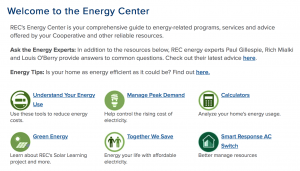 In addition to access to their energy use data online, REC also has energy experts who can answer members’ questions by phone or conduct in-person energy audits. These knowledgeable employees provide quality information for members who want to implement energy-saving steps at their home or in their business. Often these experts can be found providing energy-efficiency presentations at one of the over 200 community events REC participates in each year.
In addition to access to their energy use data online, REC also has energy experts who can answer members’ questions by phone or conduct in-person energy audits. These knowledgeable employees provide quality information for members who want to implement energy-saving steps at their home or in their business. Often these experts can be found providing energy-efficiency presentations at one of the over 200 community events REC participates in each year.
“Member satisfaction and quality experience is important to us,” added Koogler. “We think these value-added benefits of REC membership help exceed many of our members’ expectations of what an electric utility can offer.”
Learn more about REC and the value-added service offered to its members at www.myrec.coop and their online Energy Center.
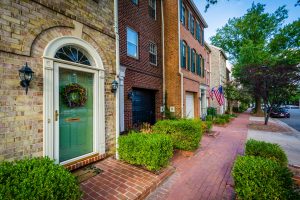 Now that the General Assembly session has ended, the VAEEC has switched its attention to several of our other priority programs, including the building code update process currently taking place here in Virginia. Southeast Energy News just had a good summary of this process that quoted VAEEC Board member Andrew Grigsby extensively.
Now that the General Assembly session has ended, the VAEEC has switched its attention to several of our other priority programs, including the building code update process currently taking place here in Virginia. Southeast Energy News just had a good summary of this process that quoted VAEEC Board member Andrew Grigsby extensively.
There are myriad important ways for you to support strong building codes in Virginia.
Public Comment Period Now Open and Webinar Available for Support
The Department of Housing and Community Development (DHCD) recently opened a public comment period seeking comment on the current draft code regulations that will run through May 26 (an extension from the original deadline of April 21).
We will be holding a members-only webinar on Thursday, April 20 at 12pm that will include:
- Update on proposals we support
- Key messaging points to consider for your comments
- Overview of VAEEC’s draft comments
- Q&A and on-the-spot feedback
Comments can be submitted through the Commonwealth’s Town Hall website.
Support Proposals in Person
On April 11th, the stakeholder workgroup, which is open to anyone to participate, will be meeting to discuss all of the energy proposals currently being considered for inclusion in the code update. Any member of the public can attend and speak in support of proposals that are being presented. We encourage anyone who is interested in this topic to attend to show your support for the following proposals* to require:
*You need to register on the DHCD website to view these and other proposals that are currently being considered.
There will also be a public hearing at the May 15th Board of Housing and Community Development meeting. The meeting will begin at 10am. We strongly encourage anyone who wishes to attend this meeting to get there early as seating is very limited.
Board Nominations Open
Finally, as we mentioned in previous communications, there will be one open seat on the Board of Housing and Community Development. We are seeking candidates who have a strong building science background and who live in congressional district one, which runs from Poquoson to Manassas (check here to see if you live in this district). If you are interested in being on the board and qualify for this seat, please email me at Chelsea@vaeec.org with your resume. We will be submitting the name(s) of our potential candidates to the administration in late spring.
VAEEC values each of our members and strives to design our programs and services in a way that best meets their needs while advancing energy efficiency throughout the Commonwealth. At the beginning of this year, we sent out a membership survey to provide all 80+ members with an easy way to voice their feedback, ideas, suggestions, and concerns.
Meetings: Length and Location
A few questions focused on our biannual meetings, which occur each year in the spring and fall. We were particularly curious if members wanted the length of these meetings to be extended and if the location should rotates throughout the state. The vast majority (80%) of survey respondents voiced that they would attend these events if they were extended to four hours, while 42% chose six hours, and 16% chose three hours. Several respondents commented that the Fall Meeting, which was three hours long, felt too rushed. (As a result, our Spring Meeting on May 19 will run 11am-3pm).
For location, 68% stated that they would attend the biannual meetings if the location rotated throughout the state. However, we received many comments stating that it would depend on the location and the length of the meeting. Several respondents suggested that the meetings stay in central Virginia (Fredericksburg, Williamsburg, Petersburg, and Charlottesville areas) in order to keep travel time at a minimum for those coming from different ends of the state.
Focus Areas
Another question focused on our members’ interest in VAEEC programmatic work. Respondents were asked to rank their interest between utility programs, building codes, benchmarking/data access, and Property Assessed Clean Energy (PACE) financing. Utility programs came in first, with building codes and benchmarking/data access at a close second and third, and PACE was ranked fourth.
When asked if there are other services that members would like their membership to include, 58% of respondents chose opportunities to present at our biannual meetings or webinar series. A member-only resource section on the website came in second at 50%, followed by more sponsorship opportunities at 8%. One comment that we found to be particularly helpful was to share the summary of the member round robins at the biannual meetings or to have a way for members to submit written report outs to share with other members. Other comments centered on legislative priorities, such as coordinating with elected officials, the Virginia Municipal League, and the Virginia Association of Counties.
Engagement
As far as VAEEC engagement goes:
- 95% of our responding members attend VAEEC events
- 79% percent read our monthly e-newsletters and other emails
- 58% visit the VAEEC website
- 47% percent of respondents participate in our webinar series and follow us on social media.
A few respondents wrote in that they also engage with VAEEC through collaboration on specific projects.
Finally, a humbling 100% of respondents voiced that they would be willing to recommend VAEEC membership to colleagues or others in the Virginia energy efficiency industry. VAEEC thrives on the participation of our members, so we are thrilled to hear that those who responded are pleased with this partnership. Here are a couple of testimonies that were shared:
“VAEEC is the place to go for ‘across-the-board’ energy expertise specific to Virginia. I know that the information that I get from VAEEC is up to date and reliable. Because the membership is comprised of the industry leaders I can trust that I am getting the best information available. And because it represents all energy-efficiency interests, VAEEC is unbiased in its information and its conclusions.”
“I believe the VAEEC draws from all sectors of the state and is attracting a group of knowledgeable, decision maker type individuals which is important to move things forward. I appreciate the opportunity to network with these individuals. In addition, I believe the VAEEC has done a great job in moving energy legislation/initiatives forward in Virginia.”
VAEEC is constantly striving to provide our members with the resources they need to succeed. If you were unable to fill out the survey, or if you have additional feedback you would like to provide, please feel free to reach out to us at any time.
If you are considering becoming a VAEEC member, you can find details on membership levels and benefits, as well as an application, here.
We just got word from VAEEC Business Platinum member E4TheFuture that there is a letter that companies and organizations can sign on to requesting that Congress continue to support residential energy efficiency, including critical funding for:
- Home Performance with ENERGY STAR
- Home Energy Score
- Weatherization Assistance Program
- State Energy Program
VAEEC has signed the letter and encourages our members to consider doing the same.
The letter opens: “As organizations and businesses that work to advance residential energy efficiency, we are writing in support of at least level funding during the remainder of Fiscal Year (FY) 2017 and in FY2018 for the U.S. Department of Energy (DOE)’s residential programs at the Building Technology Office and Weatherization and Intergovernmental Activities. These programs return benefits and savings to American homeowners, consumers, and businesses many times more than the public’s investment. We urge you to maintain at least the current level of funding and work with the new administration to ensure these programs continue to support increased economic and energy productivity.”
Read the full letter and consider signing your company or organization to send a strong and united voice on support for residential energy efficiency programs.
Deadline to sign on is Friday, March 17.
“Ensuring an energy-efficient home requires a whole concept approach. From attic to basement and everything in between, a variety of potential upgrades and improvements can make for cooler summers, warmer winters and more cash in your wallet all year round. Take advantage of available energy efficiency programs in your area and embark on a “less is more” approach to energy. Saving for a rainy day is one thing, but saving on energy costs well into the future means you’re going to need a larger piggy bank.”
That’s a message from VAEEC Business Platinum member and March Featured Member of the Month Washington Gas to its customers, a message it backs up with rebates, resources and a new Online Home Energy Audit tool.
Who is Washington Gas?
 Washington Gas, a WGL Holdings, Inc. company, delivers natural gas to more than one million residential, commercial and industrial customers throughout Washington, D.C., and the
Washington Gas, a WGL Holdings, Inc. company, delivers natural gas to more than one million residential, commercial and industrial customers throughout Washington, D.C., and the  surrounding region. Washington Gas was founded in 1848, through a Congressional charter signed into law by President James K. Polk. The new company installed gas lights in the House and Senate chambers, the White House and along Pennsylvania Avenue.
surrounding region. Washington Gas was founded in 1848, through a Congressional charter signed into law by President James K. Polk. The new company installed gas lights in the House and Senate chambers, the White House and along Pennsylvania Avenue.
What does Washington Gas offer to Virginia home and business owners?
Space heating is the largest energy consumer in a home, typically accounting for over 40 percent of a home’s energy consumption. It is also an area where significant energy savings can be realized. Currently Washington Gas offers Virginia residents a $300 rebate on a natural gas furnace with 90 percent or greater annual fuel utilization efficiency (AFUE) and a $50 rebate on a Wi-Fi-enabled programmable thermostat.
The website offers easy-to-access residential and commercial rebates. 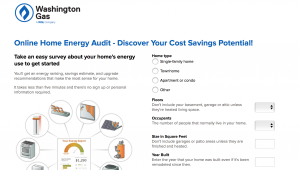
They recently added to their portfolio of customer-friendly tools an Online Home Energy Audit. By answering a few simple questions, you get an energy score , savings estimate and upgrade recommendations that make the most sense for your home. It’s a smart, interactive feature for engaging customers.
Find out more about what Washington Gas is doing on energy efficiency.
Industrial efficiency was the focus of VAEEC’s third webinar in our quarterly series. “Opportunities for Industrial Energy Efficiency in the Commonwealth” provided an opportunity for participants to learn about Combined Heat and Power (CHP) and Waste Heat to Power (WHP) and how it can make Virginia manufacturers more competitive, save money for all ratepayers, and lower the state’s emissions.
Thank you to the webinar sponsor, the Alliance for Industrial Efficiency. 
Download the presentation and recording.
We were honored to have three knowledgeable speakers who were able to share their expertise with attendees:
- Jennifer Kefer, Alliance for Industrial Efficiency
- Dalia El Tawy, Siemens
- Charles Miller, WGL Energy
Over the course of an hour, they were able to provide an overview of CHP/WHP (including their importance, benefits, and scale of opportunity), examples of CHP/WHP being used across the globe, programs and barriers in Virginia, and what more needs to happen to get CHP/WHP in the state.
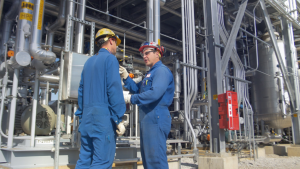 There are currently 4,400 CHP projects installed nationwide, and the majority are used for industrial applications. Manufacturer, public, and utility benefits of CHP include increased productivity and decreased operating costs. Hood Dairy in Winchester, Virginia, provides a good example. Hood worked with ZF Energy Development to design a 15-MW microgrid, which includes CHP. Not only does this give Hood a reliable, efficient source of power and food security, but it has allowed them to achieve a net savings of at least 25% when compared to grid power and 30% reduced emissions.
There are currently 4,400 CHP projects installed nationwide, and the majority are used for industrial applications. Manufacturer, public, and utility benefits of CHP include increased productivity and decreased operating costs. Hood Dairy in Winchester, Virginia, provides a good example. Hood worked with ZF Energy Development to design a 15-MW microgrid, which includes CHP. Not only does this give Hood a reliable, efficient source of power and food security, but it has allowed them to achieve a net savings of at least 25% when compared to grid power and 30% reduced emissions.
Unfortunately, a gap exists between Virginia’s CHP technical potential and its deployment. With 4,308 MW of potential projects, over two times our current capacity, the Department of Energy found Virginia to have the eleventh highest technical potential for implementation in the country. Investments in CHP and industrial efficiency could lead to a slew of benefits for Virginia, including saving 6.6 million megawatt-hours of electricity by 2030 and saving Virginia businesses $4.1 billion between 2016-2030 in avoided electricity costs.
One of the main barriers for states in the Southeast are highly competitive electricity prices due to the prevalence of coal and nuclear. To increase the use of CHP and WHP in the Commonwealth, we need more state incentives for CHP deployment. Moreover, implementing state policies aimed towards acquiring energy savings from CHP would encourage additional CHP installations. Creating interconnection standards with regard to technologies and fuels could also enhance standards and support CHP deployment within Virginia.
This webinar provided a good background on what CHP and WHP are and how they work, their benefits, the scale of opportunity in Virginia, and what needs to be done to get more CHP/WHP in the state. If you were unable to attend this webinar, you can watch the webinar recording or download the presentation here.
VAEEC Members Encouraged to Apply or Suggest Nominees
February 2017: Virginia’s Board of Housing and Community Development will be filling one seat early this summer. VAEEC would like to see a strong number of diverse nominations representing the energy efficiency industry.
Why is this important to VAEEC?
Members of the governor-appointed Housing and Community Development Board guide and vote upon the content of Virginia’s triennial update of building codes – including the energy efficiency code. Currently Virginia lags behind our neighbors to the north and south for requiring some of the advancements in efficiency standards and testing. Advanced energy codes are among the most cost-effective methods of saving energy, lowering the total cost of housing, improving health and comfort in homes, and improving quality throughout the homebuilding industry. Learn more about the importance of strong energy codes from the U.S. Department of Energy and the Responsible Energy Codes Alliance.
What can you do?
The open seat is in Virginia’s 1st congressional district, and nominees have to reside in the district to be eligible. The 1st district is represented by Rob Whittman and stretches from Williamsburg up through Fredericksburg and Stafford. Not sure if you reside in this district? Check who your legislators are here by entering your address in the yellow circle.
The seat will be filled by July 1, but the administration is expected to identify candidates soon.
Please reach out to me at chelsea@vaeec.org if you’d like to be nominated or can suggest a candidate worthy of support.
Learn more about the Board and the nomination process.
Note from VAEEC Executive Director Chelsea Harnish
Last year was an exciting year for the Virginia Energy Efficiency Council. We are highlighting our successes with our 2016 Annual Report available now for download.
Over the last 12 months, we have:
- Expanded our staff
- Re-branded the organization
- Enhanced our communication with members and regularly sought their feedback
- Launched our campaign to support PACE implementation in localities across the Commonwealth
- Increased our engagement in regulatory processes- including utility regulation at the State Corporation Commission and providing support to members participating in the building codes cycle update
- Solidified our role as the education and outreach partner for the Governor’s Executive Committee on Energy Efficiency
- Launched the very first Virginia Energy Efficiency Leadership Awards Ceremony highlighting the amazing work happening across the Commonwealth in our sector.
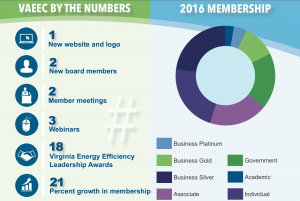 Our members know energy efficiency has tremendous potential to drive economic growth, create jobs, shrink utility bills, conserve natural resources, and reduce pollution. In fact, preliminary numbers from our 2016 Clean Energy Census indicate that building energy efficiency alone accounted for $1.2 billion in annual revenue.
Our members know energy efficiency has tremendous potential to drive economic growth, create jobs, shrink utility bills, conserve natural resources, and reduce pollution. In fact, preliminary numbers from our 2016 Clean Energy Census indicate that building energy efficiency alone accounted for $1.2 billion in annual revenue.
The Virginia Energy Efficiency Council is the voice for the energy efficiency industry in the Commonwealth, which is why our membership increased an astounding 21% over the last year. Our members include Fortune 500 companies, universities, nonprofits, local governments, state agencies, and utilities. The Council’s goal is to ensure energy efficiency is recognized as an integral part of Virginia’s economy and clean energy future.
In 2017, we will build on our successes over the last year and continue to play a pivotal role in advancing energy efficiency in Virginia. Some things we are already doing/ planning:
- Utility Regulation: Intervening in support of Dominion’s energy efficiency programs in their DSM proceedings before the State Corporation Commission this spring and participating in the SCC EM+V protocol proceedings later this year.
- Building Codes: Participating in work group meetings this spring and summer and engaging with board members and staff of state agencies who oversee the building code update cycle.
- PACE: Engaging with local government staff in Arlington County, Richmond (and surrounding counties), Charlottesville, Norfolk, and Roanoke to answer questions on PACE implementation; participating in Richmond’s official PACE stakeholder group and holding events throughout the commonwealth to educate property owners/ managers, financiers and contractors on the benefits of PACE to their work.
- Governor’s Executive Committee on Energy Efficiency: Continue working with our ‘Roadmap Team” to play a supporting role to the GEC’s efforts
- Membership Engagement: Continue to expand our communications with our membership through our annual member survey, e-newsletter and social media accounts, and the launch of our bimonthly webinar series (the next webinar focuses on Industrial Efficiency and is scheduled for 2/28. You can register here.).
- Events: Continue hosting our biannual member meetings with expanded programming and hosting our second inaugural Virginia Energy Efficiency Leadership Awards Ceremony in the fall.
Since 2017 is also an election year here in Virginia — where Virginians will elect a new Governor as well as elect a Lt. Governor and Attorney General — we plan to educate all statewide candidates on the benefits of energy efficiency and introduce them to our work, particularly our partnership with the state energy office. It is important that no matter who our new leaders are, they understand the many benefits that our industry provides to the Commonwealth.
The next 12 months are going to be exciting for the VAEEC and its members and we look forward to our continued work with all of you.
Download our 2016 Annual Report.
“Over the last several years, smart thermostats have opened up new opportunities for residential Demand Response programs, helping to achieve load management goals at reduced cost, while bringing additional benefits such as energy efficiency and improved customer satisfaction. Having worked with a diverse set of energy partners, Nest has been able to glean a much clearer picture of what induces customers to sign up for demand response programs, and what keeps them happy once they’re enrolled.”
That’s an excerpt from a 2016 white paper on the Rush Hour Rewards demand response program offered by VAEEC Gold member – and February 2017 Featured Member of the Month – Nest.
Launched in 2014 to help utilities deal with summer peaks, Nest’s Rush Hour Rewards program runs on the Nest Learning Thermostat. The program centers on running personalized events that maximize load reduction while maintaining customer comfort. Deployed by 18 utilities in North America with more launching this summer, Rush Hour Rewards is available in winter and summer versions.
Some performance highlights:
- An average of 55% aggregate HVAC load reduction during events
- Over half of customers report increased satisfaction with their energy provider after participating
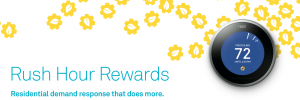 The Rush Hour Rewards white paper breaks down the keys to getting
The Rush Hour Rewards white paper breaks down the keys to getting
customers in the door and ways to keep them happy. It also provides guidance for utilities in figuring out what DR program model would work
best for them.
To get a copy of the white paper, reach out to Dave Bend (davebend@nestlabs.com) , Nest’s Head of East Coast Energy Partnerships. You can also take a look at their Rush Hour Rewards fact sheet
Getting customers in the door:
- Make customers feel rewarded—up-front incentives paid directly to the customer pack the biggest punch.
- Although rewards are important, just as many people are motivated to sign up for environmental reasons as for rewards. Different customers respond to different messages.
- If you want a customer to participate in DR, help them understand what they are signing up for and why they should care.
Keeping customers satisfied:
- Rewards and comfort matter most, but you can’t forget the impact of a customer’s enrollment experience on overall satisfaction.
- Not all rewards are created equal—simple, annual reward structures outperform other models. And large one-time rewards can backfire when the customer expects the same reward again and discovers that it will not be forthcoming.
- Allowing customers to adjust the temperature during an event if they need to has a minimal impact on overall program performance, and strong upside in terms of customer satisfaction and ongoing program participation year after year.



 More than 10,000 REC members have either 175-watt mercury vapor lights or 100-watt high-pressure sodium lights at their residence or business. To help conserve energy and improve operational efficiency, when those lights need repairs REC is replacing them with energy-efficient 40-watt LED fixtures. Not only will these lights consume less energy, they require less maintenance and are dark sky friendly, allowing an unobscured view of the night sky while still providing a sense of security.
More than 10,000 REC members have either 175-watt mercury vapor lights or 100-watt high-pressure sodium lights at their residence or business. To help conserve energy and improve operational efficiency, when those lights need repairs REC is replacing them with energy-efficient 40-watt LED fixtures. Not only will these lights consume less energy, they require less maintenance and are dark sky friendly, allowing an unobscured view of the night sky while still providing a sense of security. “Consideration of the environmental impact our industry has rounds out REC’s value equation,” added Koogler. “By offering energy efficient resources to members we are helping them take part in protecting our environment. We’re in the electricity business and today that means constantly promoting energy efficiency to our members.”
“Consideration of the environmental impact our industry has rounds out REC’s value equation,” added Koogler. “By offering energy efficient resources to members we are helping them take part in protecting our environment. We’re in the electricity business and today that means constantly promoting energy efficiency to our members.” Koogler said, “Using the My Usage tool offered through REC’s MyREC SmartHub online account portal, members can log in to view this energy use data so they can identify the potential cause of spikes in energy use before they receive an unexpected high bill. They can also sign up to receive hourly or daily energy use notifications delivered by text and email.”
Koogler said, “Using the My Usage tool offered through REC’s MyREC SmartHub online account portal, members can log in to view this energy use data so they can identify the potential cause of spikes in energy use before they receive an unexpected high bill. They can also sign up to receive hourly or daily energy use notifications delivered by text and email.”
 Now that the General Assembly session has ended, the VAEEC has switched its attention to several of our other priority programs, including the building code update process currently taking place here in Virginia. Southeast Energy News just had a
Now that the General Assembly session has ended, the VAEEC has switched its attention to several of our other priority programs, including the building code update process currently taking place here in Virginia. Southeast Energy News just had a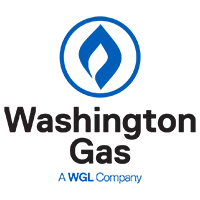

 surrounding region. Washington Gas was founded in 1848, through a Congressional charter signed into law by President James K. Polk. The new company installed gas lights in the House and Senate chambers, the White House and along Pennsylvania Avenue.
surrounding region. Washington Gas was founded in 1848, through a Congressional charter signed into law by President James K. Polk. The new company installed gas lights in the House and Senate chambers, the White House and along Pennsylvania Avenue.

 There are currently 4,400 CHP projects installed nationwide, and the majority are used for industrial applications. Manufacturer, public, and utility benefits of CHP include increased productivity and decreased operating costs. Hood Dairy in Winchester, Virginia, provides a good example. Hood worked with ZF Energy Development to design a 15-MW microgrid, which includes CHP. Not only does this give Hood a reliable, efficient source of power and food security, but it has allowed them to achieve a net savings of at least 25% when compared to grid power and 30% reduced emissions.
There are currently 4,400 CHP projects installed nationwide, and the majority are used for industrial applications. Manufacturer, public, and utility benefits of CHP include increased productivity and decreased operating costs. Hood Dairy in Winchester, Virginia, provides a good example. Hood worked with ZF Energy Development to design a 15-MW microgrid, which includes CHP. Not only does this give Hood a reliable, efficient source of power and food security, but it has allowed them to achieve a net savings of at least 25% when compared to grid power and 30% reduced emissions.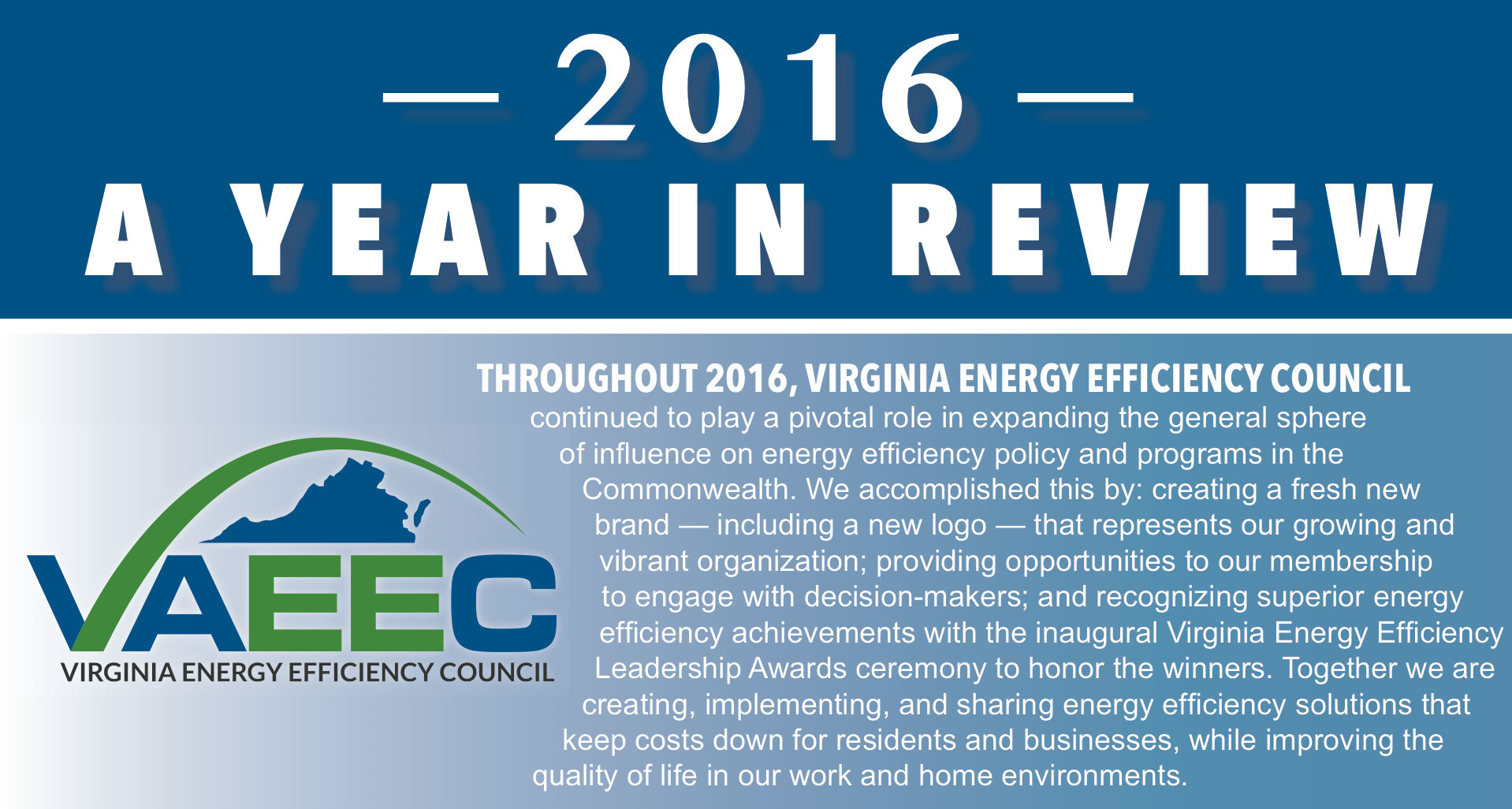

 The Rush Hour Rewards white paper breaks down the keys to getting
The Rush Hour Rewards white paper breaks down the keys to getting